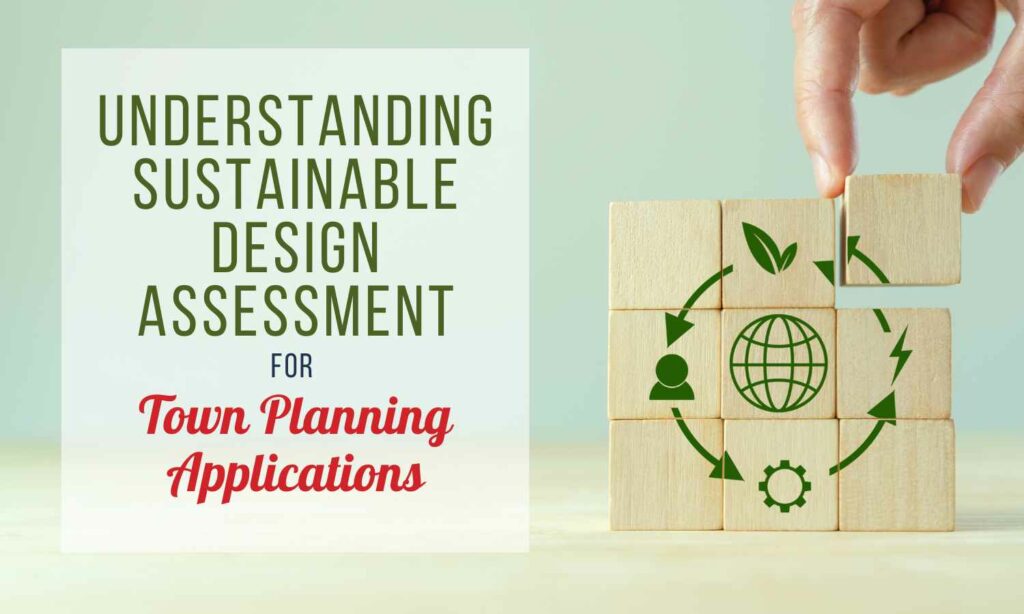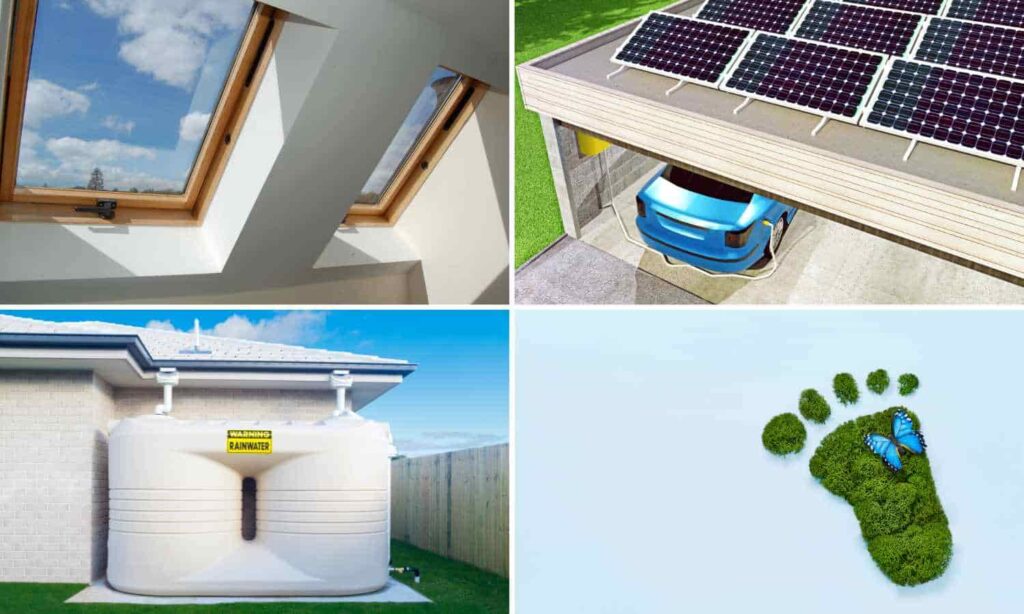30 Nov Understanding Sustainable Design Assessments for Town Planning Applications

The latest Council to introduce a mandatory requirement for Sustainable Design Assessments (SDAs) for multi dwelling applications is Bayside Council. Many local councils now have these policies and so I thought it would be good to explain SDAs in more detail. You can also read more about sustainability in planning here.
What is a Sustainable Design Assessment (SDA) and Why is it Required?
A Sustainable Design Assessment (SDA) is a comprehensive evaluation that assesses the sustainability aspects of proposed designs for new developments or renovations. The purpose of an SDA is to ensure that the design aligns with sustainable principles and meets the council’s requirements.
When submitting a town planning application, many local councils now require an SDA to be included as part of the documentation. This assessment provides valuable insights into how environmentally friendly and energy-efficient a proposed development will be. It evaluates factors such as energy usage, water conservation, waste management, and overall environmental impact.
The requirement for an SDA stems from the growing recognition of the importance of sustainable development in mitigating climate change and preserving natural resources. By assessing and promoting sustainable design practices, local councils aim to create more resilient communities that prioritise environmental responsibility.
The other reason for encouraging Sustainable Design Assessments at the planning stage is in recognition of the shift towards requiring a 7-star energy rating for new dwellings next year. Moving from 6 to 7 stars can mean that changes to a development are required that will impact the design of the dwellings. Including these considerations earlier into the planning stage will avoid applicants having to go back later to amend plans.
The Importance of Sustainable Design in Urban Development
Sustainable design plays a crucial role in shaping the future of urban development. As cities continue to grow and expand, it becomes imperative to prioritise sustainable practices that minimize the environmental impact and promote energy efficiency.
Urban development projects that incorporate sustainable design principles aim to create built environments that are environmentally friendly, socially responsible, and economically viable. These projects take into consideration various factors such as energy consumption, waste management, water conservation, and overall resource efficiency.
By embracing sustainable design in urban development, cities can reduce their carbon footprint and mitigate the negative effects of climate change. Energy-efficient buildings with proper insulation, renewable energy sources, and efficient heating and cooling systems help decrease energy consumption and lower greenhouse gas emissions.
Furthermore, incorporating green spaces within urban areas not only enhances the aesthetic appeal but also improves air quality, provides habitats for wildlife, and promotes physical well-being among residents.
In addition to the environmental benefits, sustainable design in urban development also has economic advantages. Energy-efficient buildings result in long-term cost savings through reduced utility bills. Moreover, sustainable neighborhoods often attract businesses and residents who value sustainability practices.
Overall, prioritising sustainable design in urban development is essential for creating livable cities that balance economic growth with environmental stewardship. By implementing energy-efficient technologies and considering the long-term impact on our planet’s resources, we can ensure a more sustainable future for generations to come.
The Key Elements Assessed in a Sustainable Design Assessment
When conducting a sustainable design assessment, several key elements are assessed to determine the sustainability of a design. The 9 main elements that are assessed are:
- Management
- Energy efficiency
- Water efficiency
- Waste management
- Transport
- Innovation
- Indoor environment quality
- Stormwater
- Urban ecology
Additionally building materials, both internal and external, will also be considered.
As part of the assessment, some of the areas that will be evaluated include measures to reduce energy and water usage, minimising stormwater runoff (including through the use of harvesting rain water for reuse), waste management on site, lighting and ventilation of the main rooms of the dwelling and provision of landscaping.

Navigating the Process: A Guide For Developers and Architects
When it comes to navigating the process of producing a Sustainable Design Assessment, owners and designers will need to consider various elements early on. Some of the decisions that would previously have been left to the building stage will now need to come forward so that the SDA can be prepared.
One important consideration is the choice of materials. Developers and architects should carefully select materials that are not only aesthetically pleasing but also have appropriate sustainability and insulating properties. This involves researching different options, considering their environmental impact, and ensuring they meet the project’s requirements. The colour palette will also need to be chosen as well. Different colours have different levels of solar absorbance and reflectivity and this will need to be factored into the overall rating of the development.
Heating and cooling systems play a crucial role in creating comfortable indoor environments while minimising energy consumption. The preferred heating and cooling systems will need to be selected so that the energy usage can be modelled as part of the assessment.
Window and solar considerations are becoming increasingly important to achieve a 7 star rating. Designers should evaluate the building’s orientation to maximise natural light exposure while minimising heat gain or loss. Window types and materials should also be selected so that they can be included in the initial energy modelling. Owners can also incorporate solar panels or car charging ports as additional features of the development.
By considering these elements early in the process, developers and architects can ensure a well-designed building that is sustainable, energy-efficient, comfortable for occupants, and aligned with their clients’ goals.
Summary
Many Councils are now requiring a Sustainable Design Assessment to be prepared as part of the planning process. These policies have been introduced in recognition of the climate crisis and the need to reduce energy and water usage in new dwellings and promote more sustainable building design. While the shift in requirements does require more aspects of the design and build be decided on earlier, the advantage of this process is that it will smooth the way forward in the building permit process with the new requirement for 7 stars as well as the move towards all electric for new homes next year.
How can we assist? I have recently become accredited to prepare Sustainable Design Assessments , so that we can now offer an SDA report as well as a Town Planning Report for our clients. This means that we can streamline the planning process further and provide feedback on the sustainable aspects of the design during the early stages of the project as well.
Need some help on your next project? Contact us now.


